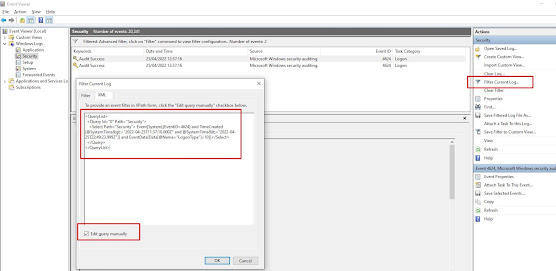Today we found that one of our databases had mistakenly been dropped from our SQL server. To find out who you can use one of these two queries which look at the SQL log file trace...
DECLARE @path varchar(256)
SELECT @path = path
FROM sys.traces
where id = 1
SELECT *
FROM fn_trace_gettable(@path, 1)
where databasename = 'myDbName'
order by starttime desc
To prove it without a shadow of a doubt, you can use this more detailed query...
declare @databaseID int = 5 -- TODO: Figure out your database id here
;With cteObjectTypes AS
(
SELECT
TSV.trace_event_id,
TSV.subclass_name,
TSV.subclass_value
FROM
sys.trace_subclass_values AS TSV JOIN
sys.trace_columns AS TC ON
TSV.trace_column_id = TC.trace_column_id
WHERE
TC.[name] = 'ObjectType'
),
cteEventSubClasses AS
(
SELECT
TSV.trace_event_id,
TSV.subclass_name,
TSV.subclass_value
FROM
sys.trace_subclass_values AS TSV JOIN
sys.trace_columns AS TC ON
TSV.trace_column_id = TC.trace_column_id
WHERE
TC.[name] = 'EventSubClass'
)
SELECT
TE.[name],
I.ApplicationName,
I.BigintData1,
I.ClientProcessID,
I.ColumnPermissions,
I.DatabaseID,
I.DatabaseName,
I.DBUserName,
I.Duration,
I.EndTime,
I.Error,
I.EventSequence,
Convert(nvarchar(10), I.EventSubClass) + N'-' + ESC.subclass_name as EventSubClass,
I.FileName,
I.HostName,
I.IndexID,
I.IntegerData,
I.IsSystem,
I.LineNumber,
I.LoginName,
I.LoginSid,
I.NestLevel,
I.NTDomainName,
I.NTUserName,
I.ObjectID,
I.ObjectID2,
I.ObjectName,
Convert(nvarchar(10), I.ObjectType) + N'-' + OT.subclass_name as ObjectType,
I.OwnerName,
I.ParentName,
I.Permissions,
I.RequestID,
I.RoleName,
I.ServerName,
I.SessionLoginName,
I.Severity,
I.SPID,
I.StartTime,
I.State,
I.Success,
I.TargetLoginName,
I.TargetLoginSid,
I.TargetUserName,
I.TextData,
I.TransactionID,
I.Type,
I.XactSequence
FROM
sys.traces T CROSS Apply
sys.fn_trace_gettable(T.[path], T.max_files) I JOIN
sys.trace_events AS TE ON
I.EventClass = TE.trace_event_id LEFT JOIN
cteEventSubClasses AS ESC ON
TE.trace_event_id = ESC.trace_event_id And
I.EventSubClass = ESC.subclass_value LEFT JOIN
cteObjectTypes AS OT ON
TE.trace_event_id = OT.trace_event_id AND
I.ObjectType = OT.subclass_value
WHERE
T.is_default = 1
--TE.NAME = 'Object:Deleted'
--and databaseid = @databaseID
order by starttime desc
Safe to say with the latter query the evidence was pretty damning for one individual on our team 



